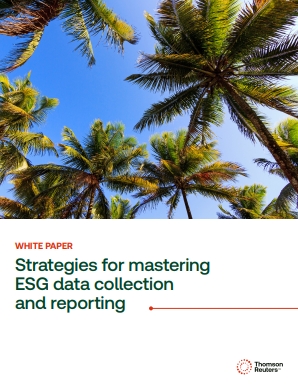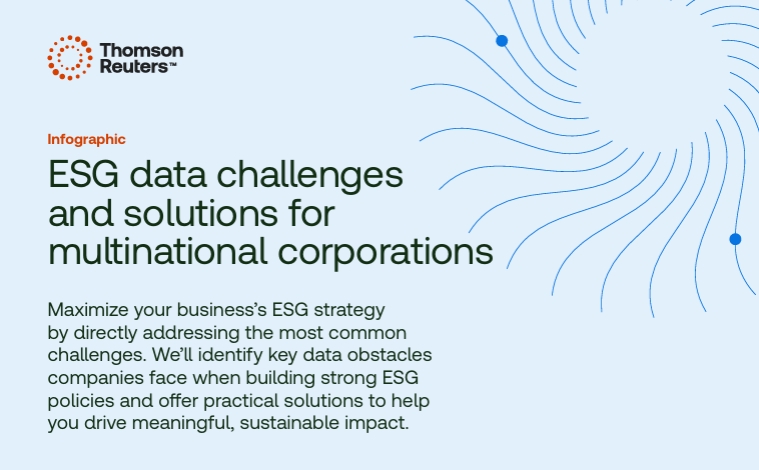ESG assurance is now vital for corporate credibility—and by 2028, the Corporate Sustainability Reporting Directive (CSRD) will make reasonable assurance mandatory.
Highlights
Limited vs. reasonable assurance offers flexibility, but deeper audits will soon be required under CSRD.
ESG audits ensure data readiness, uncover gaps, and help companies meet evolving global reporting standards.
As performance metrics for environmental, social, and governance (ESG) policies become key indicators of corporate responsibility and sustainability, the need for reliable, trustworthy ESG data is growing.
Proving ESG data integrity is challenging due to its multiple sources, large volumes, and inconsistent formats. Additionally, data may remain unverified, particularly from third-party suppliers.
Trust in ESG data is essential because investors, customers, and other stakeholders rely on it to assess a company’s practices and performance. Regulators also need confidence in the quality and reliability of ESG reporting. Accurate, trustworthy ESG data helps prevent greenwashing, a deceptive tactic that some companies use to create a false appearance of commitment to environmental sustainability.
Jump to ↓
ESG assurance is the key to trust
The rising demand to demonstrate the integrity of ESG data is driving the widespread adoption of ESG assurance, once a voluntary measure. The European Union’s Corporate Sustainability Reporting Directive (CSRD) now requires companies to obtain an independent ESG assurance assessment. Other countries, including the United Kingdom, China, and New Zealand, have introduced similar disclosure requirements, especially for climate reporting.
What Is ESG assurance?
ESG assurance works much like a financial audit. An independent third party, typically a CPA firm, evaluates the:
Credibility of ESG data
Reliability of reporting methods
Completeness of disclosures
The process also reviews how data is collected and whether it aligns with industry standards. Depending on the scope, it may include an assessment of the company’s governance and management practices.
What does the assurance report Include?
After the assessment, the third-party issues a report that:
Confirms whether ESG data meets industry standards
Highlights areas for improvement
Identifies missing or incomplete data
The assessor’s conclusion acts as an independent seal of approval, helping companies build trust with stakeholders and confidently communicate that their ESG goals are being met.
Limited vs. reasonable ESG assurance
ESG assurance audits for large companies are typically performed by one of the Big Four accounting firms or a certified ESG specialist, given the need for specialized expertise. The assessor’s credentials carry significant weight, as the report’s credibility must remain intact.
ESG assurance is typically separated into two categories:
Limited assurance: A basic review that checks for calculation and reporting errors and evaluates how well the company’s ESG methods align with industry standards.
Reasonable assurance: A more thorough examination that involves:
Recalculating ESG data
Collecting additional documentation
Conducting site visits and interviews
Performing detailed analyses
Evaluating other factors based on scope and detail
Limited assurance is the most common approach because it costs less and currently meets regulatory requirements. However, the CSRD plans to require reasonable assurance by October 2028. As ESG assurance becomes more critical, more companies are opting for detailed reviews to strengthen compliance and differentiate themselves from competitors.
ONESOURCE ESG Reporting for SAP Sustainability Control Tower
Thomson Reuters and SAP integrate for effortless ESG reporting.
Increase data accuracy ↗
Preparing for an ESG assurance audit
To keep the ESG assurance process on track, companies should first conduct a full internal review. They need to confirm their data is accurate, their sources are reliable, and their supporting documents are complete and easy for the assessor to access.
Along with selecting their desired level of assurance, companies can define the scope of the assessment. They don’t need to apply the same level of scrutiny to every ESG category or data point. However, narrowing the scope may reduce the assessment’s perceived value.
Depending on their industry and stakeholder expectations, companies may choose to focus primarily on environmental factors such as:
Greenhouse gas emissions
Carbon footprint
Waste management
Others may prioritize social factors such as:
To build effective ESG policies, companies must fully develop all three elements, environmental, social and governance, and align them with both their goals and accepted standards. A more complete assessment not only verifies the integrity of a company’s ESG practices but also identifies key risks to address and opportunities to explore.
How ESG assurance drives long-term success
ESG assurance plays a critical role in safeguarding the integrity of sustainability reporting. By verifying ESG data through an independent assessment, companies can give investors, customers, and other stakeholders confidence in their sustainability commitments. This assurance helps demonstrate that those commitments are both genuine and actively being met.
Without that trust, and the credible data to back it up, ethical sustainability becomes harder to enforce and easier to overlook.
Companies that prioritize strong ESG policies are setting themselves apart—not just ethically, but strategically. These policies create a solid foundation for responsible governance and help organizations:
Reduce reputational risks
Meet evolving regulatory requirements
Embed ethical principles into decision-making
Strengthen brand reputation through sustainability commitments
Outperform competitors with strong ESG practices
ESG assurance ties together every part of ESG compliance. When companies align their sustainability goals with business strategy, they strengthen their defenses against global uncertainty and position themselves for long-term growth. Those that ignore ESG principles risk more than regulatory penalties, they jeopardize the future of the business.
Ready to strengthen your ESG strategy?
Download our white paper, “Strategies for mastering ESG data collection and reporting,” to explore common challenges and proven solutions that support data integrity and regulatory compliance.
Want a quick visual overview?
Check out our infographic, ESG data challenges and solutions, for a snapshot of how ESG assurance supports long-term business success.

Strategies for mastering ESG data collection and reporting
Discover the impact of ESG data management, cross-functional collaboration, and integrated technology solutions.
Gain a competitive edge ↗

Infographic
ESG data challenges and solutions for multinational corporations
View now ↗




























